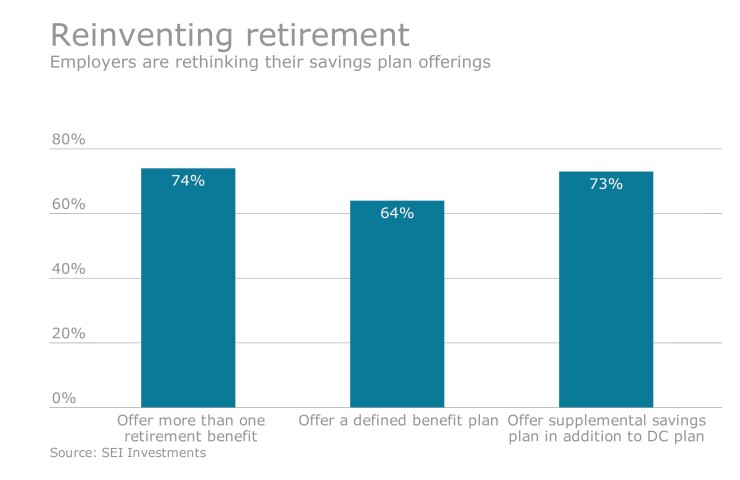California and four other states (Connecticut, Illinois, Maryland and Oregon) have passed legislation requiring employers that do not sponsor employee retirement plans to automatically withhold funds from employees’ pay, and forward them to IRAs maintained under state-run investment programs. Provided that these auto-IRA programs meet safe harbor requirements recently defined by the Department of Labor in
In light of this growing trend, what do employers need to know about auto-IRA programs? Some key points are listed below:

1) Some lead time exists. Even for state auto-IRA programs that become effective Jan. 1, 2017 (e.g., in California and Oregon), actual implementation of employee contributions is pushed out to July 1, 2017 (in Oregon) and, in California, enrollment must wait until regulations governing the program are adopted. The California program, titled the
2) Employer involvement is strictly limited. The DOL safe harbor prohibits employer contributions to auto-IRAs and requires that employers fulfill only the following “ministerial” (clerical) tasks:
a. forwarding employee salary deferrals to the program
b. providing notice of the program to the employees and maintaining contribution records
c. providing information to the state as required, and
d. distributing state program information to employees.
e. Note that in California, the Employment Development Department will develop enrollment materials for employers to distribute, and in addition a state-selected third party administrator will collect and invest contributions, effectively limiting the employer role to forwarding salary deferrals.
3) Employers always have the option of maintaining their own plan. Generally the state auto-IRA programs established to date exempt employers that maintain or establish any retirement plan (401(k), pension, SEP, or SIMPLE), even plans with no auto-enrollment feature or employer match used to encourage employee salary deferrals. Therefore employers need not be significantly out of pocket (other than for administrative fees) to avoid a state auto-IRA mandate. Employers should bear in mind that an employer-sponsored retirement program, even if only a SEP or SIMPLE IRA, helps to attract and retain valued staff, and should consider establishing their own plan in advance of auto-IRA program effective dates for that reason.
4) Penalties may apply. California’s auto-IRA program imposes a financial penalty on employers that fail to participate. The penalty is equal to $250 per eligible employee if employer failure to comply lasts 90 or more days after receipt of a compliance notice; this increases to $500 per employee if noncompliance extends 180 or more days after notification. The
5) Voluntary participation in auto-IRA program may create an ERISA plan. One of the requirements of the DOL safe harbor is that employer participation in auto-IRA programs (referred to as “State payroll deduction savings programs” be compulsory under state law. If participation is voluntary, an employer will be deemed to have established an ERISA plan. In theory, this rule could be triggered when an employer that was mandated to participate later drops below the number of employees needed to trigger the applicable state mandate (for instance, a California employer that drops below 5 employees), but continues to participate. The DOL leaves it to the states to determine whether participation remains compulsory for employers despite reductions in the number of employees. The DOL also notes that, under an
6) The Trump Administration will likely support auto-IRA programs. Early and necessarily tentative conclusions are that the Trump Administration will continue to support the DOL’s safe harbor regulation exempting auto-IRA programs from ERISA, as well as other state-based efforts to address the significant savings gap now known to confront much of the country’s workforce. One unknown variable is the degree to which the Trump Administration will be influenced by opposition to the programs mounted by the financial industry. Until the direction of the Trump Administration becomes clearer, employers that do not currently maintain a retirement plan should track auto-IRA legislation in their state or city and otherwise prepare to comply with a state or more local program in the near future, ideally by adopting their own retirement plan for employees.





